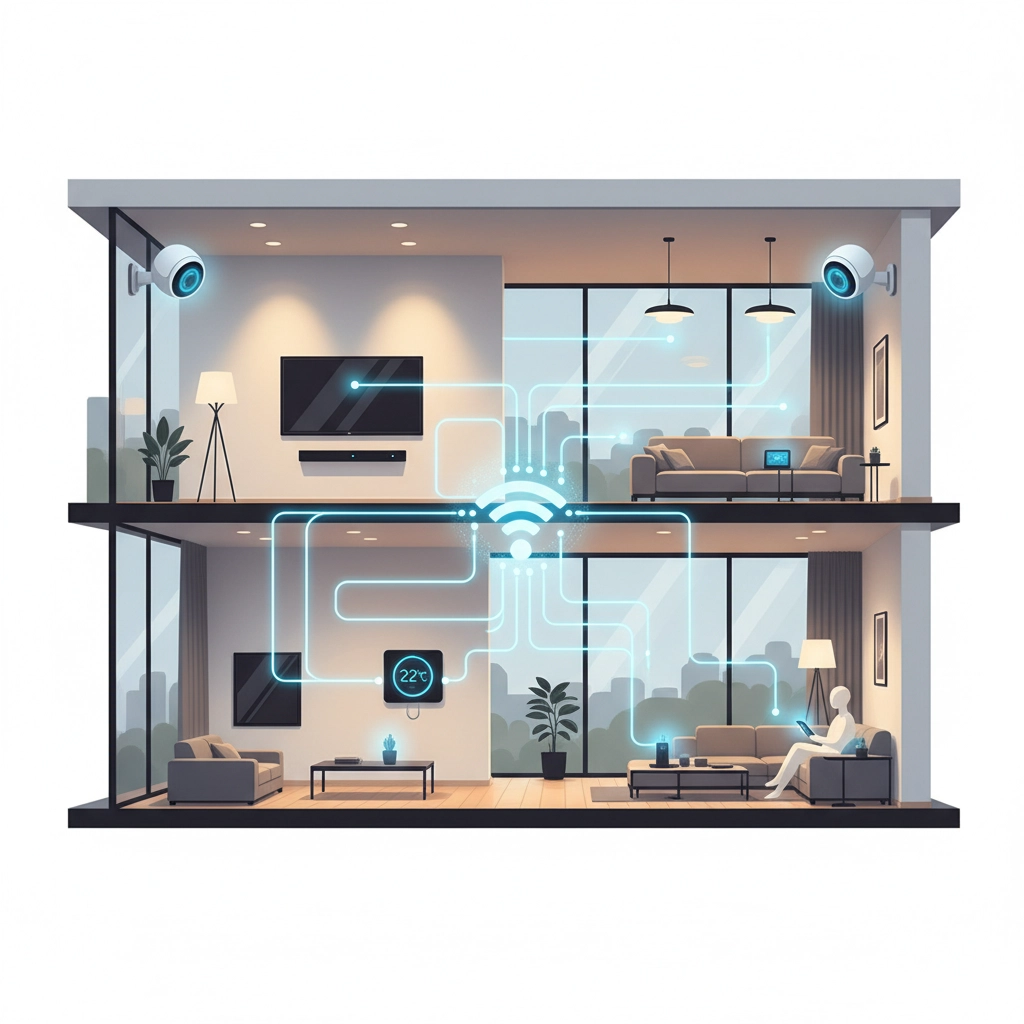Remember when downloading a single song took forever, and streaming a movie was more of a wishful thought than reality? Those days feel like ancient history now, but we're about to experience another massive leap forward. Multi-gigabit fiber internet is here, and it's going to completely transform how you stream your favorite shows and dominate your gaming sessions.
If you think your current internet is fast enough, think again. Multi-gigabit fiber doesn't just offer faster speeds: it's a complete game-changer that opens up possibilities you probably haven't even considered yet.
What Exactly Is Multi-Gigabit Fiber?
Let's break this down without getting too technical. Traditional internet connections send data through copper wires using electrical signals. Multi-gigabit fiber, on the other hand, uses thin strands of glass or plastic to transmit data as pulses of light. Light travels incredibly fast: much faster than electrical signals: which is why fiber can deliver speeds that make regular broadband look like dial-up.

We're talking about speeds up to 10 Gbps, compared to the 25-100 Mbps you might get with conventional broadband. That's not just a little faster: it's 10 to 40 times faster. But speed isn't the only advantage. Fiber also offers something called symmetrical bandwidth, meaning your upload and download speeds are roughly the same. This is huge for gaming and streaming, and we'll get into why in a moment.
Streaming Like You've Never Experienced Before
Say goodbye to buffering forever. With multi-gigabit fiber, you can stream 4K content without a hiccup, and even 8K streaming becomes totally feasible. Those ultra-high-definition TVs that have been sitting in stores? They finally make sense when you have the internet speed to actually use them properly.
But here's where it gets really interesting: multiple people in your household can stream different content simultaneously without anyone experiencing a drop in quality. Dad can watch his 4K sports game, Mom can binge her favorite series, and the kids can stream their shows, all at the same time without anyone getting the dreaded spinning wheel of death.

Movie downloads that used to take hours now happen in minutes: sometimes even seconds. Want to download a full-length movie before a long flight? No problem. Need to grab the latest season of a show before your weekend getaway? Done and done.
The symmetrical upload speeds also mean you can share your own content effortlessly. Whether you're video calling family, uploading vacation photos, or livestreaming your latest creative project, the upload speed keeps pace with your download speed.
Gaming Gets A Serious Upgrade
For gamers, multi-gigabit fiber is like switching from a rusty old bike to a Formula 1 race car. The ultra-low latency means your ping rates drop dramatically, giving you a real competitive edge in online games. Every millisecond matters when you're trying to get that perfect headshot or execute a complex combo move.
Those massive game downloads that used to eat up your entire evening? Now they're done before you can grab a snack from the kitchen. Modern AAA games routinely exceed 100 GB, and with multi-gigabit fiber, these downloads finish in minutes rather than hours.

But here's something many people don't think about: if you stream your gameplay on Twitch or YouTube, you need solid upload speeds to maintain stream quality while still playing smoothly. Traditional internet often can't handle both simultaneously without compromise. Fiber's symmetrical speeds mean you can stream in high definition without your gaming performance taking a hit.
Cloud gaming services like Xbox Cloud Gaming, NVIDIA GeForce Now, and PlayStation Now also become incredibly responsive. These services essentially stream games to your device, so they demand the kind of reliable, high-speed connection that multi-gigabit fiber delivers perfectly.
The Tech Behind The Magic
The secret sauce is in how the data travels. Instead of pushing electrical signals through copper wires (which have physical limitations), fiber optic cables use light pulses. Light doesn't face the same resistance and interference issues that electrical signals do, which means more consistent speeds and better reliability.
Think of it like the difference between shouting across a crowded room versus having a direct phone conversation. The message gets through much clearer and faster with fiber.
This technology also handles distance much better than traditional broadband. While copper connections slow down significantly over long distances, fiber maintains its speed and signal quality much more consistently.
Real-World Benefits You'll Actually Notice
Beyond the obvious speed improvements, multi-gigabit fiber brings some quality-of-life upgrades you might not expect. Video calls become crystal clear, even with multiple people on screen. Working from home becomes seamless, with large file uploads and downloads happening in the background without disrupting your other online activities.

Smart home devices work more reliably when they have the bandwidth they need. Security cameras, smart thermostats, voice assistants, and streaming devices all perform better when they're not competing for limited bandwidth.
The reliability factor is huge too. Fiber connections experience fewer outages and service interruptions compared to traditional broadband. When you're in the middle of an important gaming tournament or binge-watching the season finale, the last thing you want is your internet cutting out.
Future-Proofing Your Digital Life
Here's the thing about technology: it always advances faster than we expect. A few years ago, 4K seemed excessive, and now it's becoming standard. 8K is on the horizon, virtual reality is getting more sophisticated, and who knows what's coming next.
Multi-gigabit fiber essentially future-proofs your home network. Whatever new streaming services, gaming platforms, or digital technologies emerge in the coming years, your internet infrastructure will be ready to handle them.

This isn't just about having faster internet today: it's about investing in technology that will serve you well for years to come. While your neighbors are still dealing with buffering and slow downloads, you'll be ready for whatever the digital future throws at us.
Ready To Make The Switch?
If you're tired of compromising on your streaming quality or losing games because of lag, it might be time to seriously consider multi-gigabit fiber. The technology is here, it's reliable, and it's more accessible than ever before.
The difference between regular broadband and multi-gigabit fiber isn't just incremental: it's transformational. Whether you're a serious gamer, a streaming enthusiast, or someone who just wants their internet to work seamlessly, fiber delivers an experience that traditional connections simply can't match.
Want to learn more about bringing multi-gigabit fiber to your home? Drop us a line and let's talk about how Premier Broadband can upgrade your digital experience. Because life's too short for buffering wheels and laggy gameplay.




